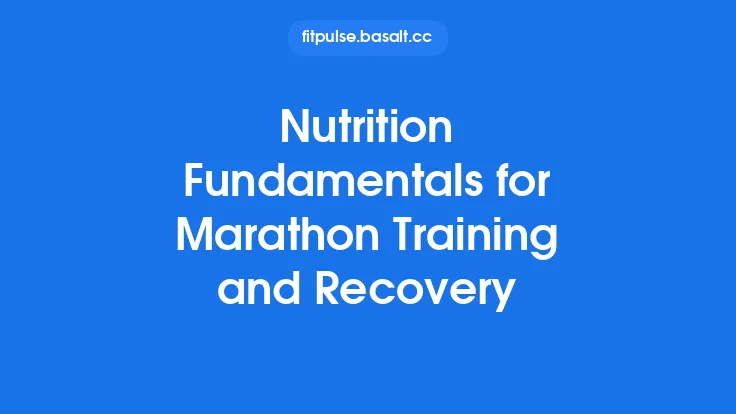When it comes to optimizing training outcomes, the supplement aisle can feel like a maze of promises, scientific jargon, and marketing hype. While a well‑balanced diet remains the cornerstone of any performance plan, certain nutraceuticals—when chosen wisely and used responsibly—can provide measurable benefits that complement training adaptations. This guide distills the current body of peer‑reviewed evidence into practical recommendations, helping athletes and fitness enthusiasts separate credible ergogenic aids from fleeting trends.
Understanding the Regulatory Landscape
1. The legal definition of a dietary supplement
In the United States, the Dietary Supplement Health and Education Act (DSHEA) of 1994 classifies supplements as products intended to supplement the diet, containing one or more dietary ingredients such as vitamins, minerals, herbs, amino acids, or “other substances.” Unlike pharmaceuticals, supplements are not required to prove efficacy or safety before reaching the market; the onus is on manufacturers to ensure product integrity.
2. What “GRAS” and “New Dietary Ingredient” mean
“Generally Recognized As Safe” (GRAS) status indicates that a substance is widely accepted as safe for its intended use based on scientific consensus. New Dietary Ingredients (NDIs) must be notified to the FDA 75 days before marketing, accompanied by evidence that they are reasonably expected to be safe under the conditions of use.
3. Third‑party certification programs
Because regulatory oversight is limited, many athletes rely on independent testing organizations (e.g., NSF Certified for Sport, Informed‑Sport, USP). These programs verify label claims, test for contaminants, and screen for substances prohibited by major anti‑doping agencies. Selecting a supplement with a reputable third‑party seal dramatically reduces the risk of inadvertent doping violations or exposure to harmful adulterants.
How to Evaluate Scientific Evidence
| Criterion | What to Look For |
|---|---|
| Study design | Randomized, double‑blind, placebo‑controlled trials (RCTs) are the gold standard. Observational or anecdotal reports carry far less weight. |
| Sample characteristics | Results from trained athletes are more applicable to performance contexts than those from sedentary or clinical populations. |
| Dosage and timing | Effective protocols are usually reported in the methods section; “take as needed” statements rarely reflect research‑backed regimens. |
| Outcome measures | Objective metrics (e.g., power output, time‑to‑exhaustion, muscle thickness via imaging) are more reliable than subjective feelings of “energy.” |
| Replication | Consistency across multiple independent studies strengthens confidence in an ingredient’s efficacy. |
When a supplement meets several of these criteria, it can be considered evidence‑based. Conversely, if the literature is sparse, contradictory, or limited to low‑quality designs, a cautious “wait and see” approach is advisable.
The Most Robustly Supported Ergogenic Aids
Creatine Monohydrate
- Mechanism: Increases intramuscular phosphocreatine stores, facilitating rapid ATP regeneration during high‑intensity, short‑duration efforts.
- Evidence: Meta‑analyses encompassing >500 participants consistently show improvements of 5–15% in repeated sprint performance, maximal strength, and lean mass gains when combined with resistance training.
- Dosage protocol: 0.1 g·kg⁻¹ body weight per day (≈5 g for most adults) for 4–6 weeks; a loading phase (20 g·day⁻¹ split into 4 doses for 5–7 days) can accelerate saturation but is not essential.
- Safety: Long‑term studies (≥5 years) report no adverse effects on renal function in healthy individuals. Adequate hydration is recommended, though creatine does not inherently cause dehydration.
Caffeine
- Mechanism: Antagonizes adenosine receptors, reducing perceived exertion and enhancing motor unit recruitment; also mobilizes free fatty acids, sparing glycogen during prolonged activity.
- Evidence: Across >200 RCTs, caffeine (3–6 mg·kg⁻¹ body weight) improves endurance time‑to‑exhaustion by 10–20% and augments power output in sprint and strength tasks by 2–5%.
- Dosage protocol: 3–6 mg·kg⁻¹ taken 30–60 minutes before exercise. Habitual users may experience attenuated responses; a “caffeine taper” (abstinence for 7–10 days) can restore sensitivity.
- Safety: Generally well tolerated at recommended doses; excessive intake (>9 mg·kg⁻¹) can provoke tachycardia, gastrointestinal upset, and sleep disturbances.
Beta‑Alanine
- Mechanism: Serves as a precursor to carnosine, a dipeptide that buffers intramuscular hydrogen ions, delaying pH decline during high‑intensity work.
- Evidence: Systematic reviews report 0.5–2.0% improvements in performance for activities lasting 1–4 minutes (e.g., 400‑m sprint, rowing, high‑intensity interval training).
- Dosage protocol: 4–6 g·day⁻¹, divided into 800‑mg doses to minimize paresthesia (tingling sensation). Loading for 4–6 weeks is required to elevate muscle carnosine concentrations.
- Safety: No serious adverse events; transient paresthesia is the most common side effect, mitigated by dose splitting.
Nitrate (Beetroot Juice)
- Mechanism: Dietary nitrate is reduced to nitrite and then nitric oxide (NO), which enhances mitochondrial efficiency and reduces the oxygen cost of submaximal exercise.
- Evidence: Meta‑analyses of 30+ trials show 1–3% improvements in time‑trial performance and a modest (~5 %) increase in muscle contractile efficiency during moderate‑intensity endurance work.
- Dosage protocol: 6–8 mmol nitrate (≈500 ml beetroot juice) consumed 2–3 hours before activity. Chronic supplementation (≥5 days) may produce additive benefits.
- Safety: Generally safe; individuals on nitrate‑reducing medications (e.g., nitroglycerin) should avoid concurrent use due to potential hypotension.
Sodium Bicarbonate
- Mechanism: Elevates extracellular pH, enhancing the gradient for H⁺ efflux from muscle cells, thereby buffering metabolic acidosis during high‑intensity efforts.
- Evidence: Strong support for activities lasting 1–7 minutes (e.g., 800‑m run, rowing, high‑intensity intervals), with performance gains of 2–3% reported in well‑controlled trials.
- Dosage protocol: 0.2–0.3 g·kg⁻¹ body weight ingested 60–120 minutes pre‑exercise, often split into smaller doses to reduce gastrointestinal discomfort.
- Safety: GI upset (nausea, bloating) is the primary limiting factor; gradual dose titration and co‑ingestion with a carbohydrate‑rich meal can improve tolerance.
HMB (β‑Hydroxy β‑Methylbutyrate)
- Mechanism: A metabolite of the branched‑chain amino acid leucine; purported to attenuate muscle protein breakdown and stimulate synthesis via the mTOR pathway.
- Evidence: Mixed; meta‑analyses suggest modest (~1–2 %) improvements in strength and lean mass during untrained or early‑stage training, with diminishing returns in well‑trained athletes.
- Dosage protocol: 3 g·day⁻¹ (1 g taken three times daily) for at least 2 weeks before expected benefits.
- Safety: No adverse effects reported at standard dosages; long‑term safety data (>12 months) remain limited.
Supplements with Limited or Inconsistent Evidence
| Ingredient | Current Consensus | Typical Use Cases |
|---|---|---|
| Branched‑Chain Amino Acids (BCAAs) | Small effect sizes; benefits largely overlap with whole‑protein intake. | Situations where protein intake is insufficient or during prolonged fasting. |
| Glutamine | No clear performance advantage in healthy, trained individuals. | May support immune function during heavy training loads, but evidence is weak. |
| L‑Carnitine | Inconsistent findings; modest improvements in fat oxidation without clear performance gains. | Often marketed for “fat‑burn” claims; not a primary performance enhancer. |
| Adaptogenic Herbs (e.g., ashwagandha, rhodiola) | Emerging data suggest potential reductions in perceived exertion and cortisol, but methodological quality varies. | May aid stress management; not a direct strength or endurance booster. |
| Collagen Peptides | May improve joint comfort and tendon stiffness, but effects on performance are indirect. | Useful for individuals with joint discomfort; not a primary strength supplement. |
When evidence is equivocal, athletes should prioritize proven strategies (training programming, nutrition, recovery) before allocating resources to these products.
Practical Guidelines for Integrating Supplements
- Start with a needs assessment
- Identify specific performance goals (e.g., increase sprint power, improve time‑trial speed).
- Evaluate dietary intake to ensure baseline nutrient adequacy; supplements are adjuncts, not replacements.
- Prioritize “high‑impact” supplements
- Creatine, caffeine, beta‑alanine, nitrate, and sodium bicarbonate have the strongest evidence‑to‑benefit ratios.
- Introduce one new supplement at a time, allowing 2–4 weeks to assess tolerance and effect.
- Timing matters, but context is key
- For acute ergogenic aids (caffeine, nitrate, sodium bicarbonate), ingest within the window identified by research (30 min–2 h pre‑exercise).
- For chronic agents (creatine, beta‑alanine, HMB), maintain consistent daily dosing regardless of training day.
- Monitor and document
- Keep a simple log noting dosage, timing, perceived effects, and any side effects.
- Objective performance metrics (e.g., lift loads, sprint times) provide the most reliable feedback.
- Cycle when appropriate
- Some agents (caffeine, sodium bicarbonate) may benefit from periodic “off‑weeks” to prevent tolerance or gastrointestinal adaptation.
- Cycling is less critical for creatine and beta‑alanine, which rely on tissue saturation.
- Stay vigilant about contamination
- Use only products bearing a reputable third‑party certification.
- Retain receipts and batch numbers; in the event of a doping test, documentation can be crucial.
Special Populations and Considerations
- Female athletes: Hormonal fluctuations can influence fluid balance and caffeine metabolism; individualized dosing may be required.
- Youth athletes (≤18 years): The safety profile of most ergogenic aids is less established; creatine and caffeine are generally considered safe at adult dosages only under professional supervision.
- Older adults (≥50 years): Creatine may aid in preserving muscle mass and functional strength; beta‑alanine can improve high‑intensity capacity, but tolerance should be monitored.
- Medical conditions: Individuals with hypertension, cardiac arrhythmias, or renal disease should consult healthcare providers before using caffeine, creatine, or sodium bicarbonate.
Debunking Common Myths
| Myth | Reality |
|---|---|
| “All supplements are natural and therefore safe.” | Natural origin does not guarantee safety; contaminants, excessive dosages, and interactions can pose risks. |
| “More is always better.” | Ergogenic effects plateau once tissue saturation is reached; excess intake can increase side‑effects without added benefit. |
| “If a supplement works for someone else, it will work for me.” | Genetic variability, training status, and diet influence responsiveness; personalized testing is essential. |
| “Supplements can replace a poor diet.” | No supplement can fully compensate for chronic nutrient deficiencies or inadequate caloric intake. |
| “All sports nutrition products are tested for banned substances.” | Only products with third‑party certification provide that guarantee; many over‑the‑counter brands lack rigorous testing. |
Future Directions in Exercise Supplement Research
- Genotype‑guided supplementation – Emerging studies suggest that polymorphisms in genes related to caffeine metabolism (CYP1A2) or creatine transport (SLC6A8) may predict individual responsiveness. Large‑scale trials are needed before routine application.
- Synergistic stacking – Investigations into combined protocols (e.g., creatine + beta‑alanine) aim to determine whether additive or antagonistic effects exist. Preliminary data indicate modest synergism for high‑intensity repeated‑sprint protocols.
- Microbiome interactions – The gut microbiota can modulate the bioavailability of nitrate and polyphenol‑rich extracts, opening avenues for personalized dosing based on microbial composition.
- Long‑term health outcomes – While acute performance benefits are well documented, the impact of chronic supplementation on cardiovascular health, bone density, and metabolic markers remains an active research frontier.
Bottom Line
Evidence‑based supplementation can be a valuable component of an athlete’s performance toolkit, but it must be approached with the same rigor applied to training programming and nutrition planning. By:
- Understanding regulatory safeguards
- Critically appraising the scientific literature
- Focusing on supplements with robust efficacy data (creatine, caffeine, beta‑alanine, nitrate, sodium bicarbonate, and, where appropriate, HMB)
- Implementing systematic dosing, monitoring, and safety protocols
you can harness the proven benefits of nutraceuticals while minimizing risks. Remember that supplements amplify, not replace, the foundational pillars of consistent training, balanced nutrition, adequate sleep, and recovery. When integrated thoughtfully, they become a strategic edge that supports your long‑term athletic goals.





